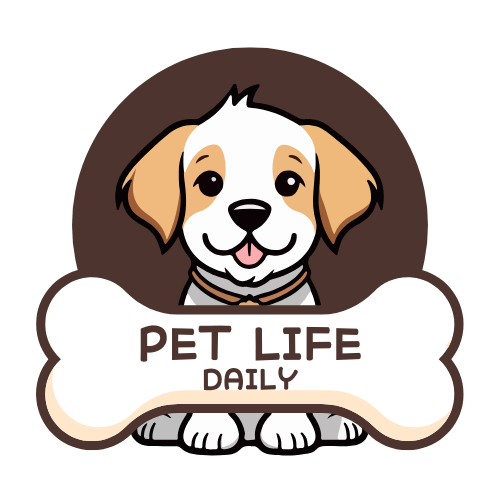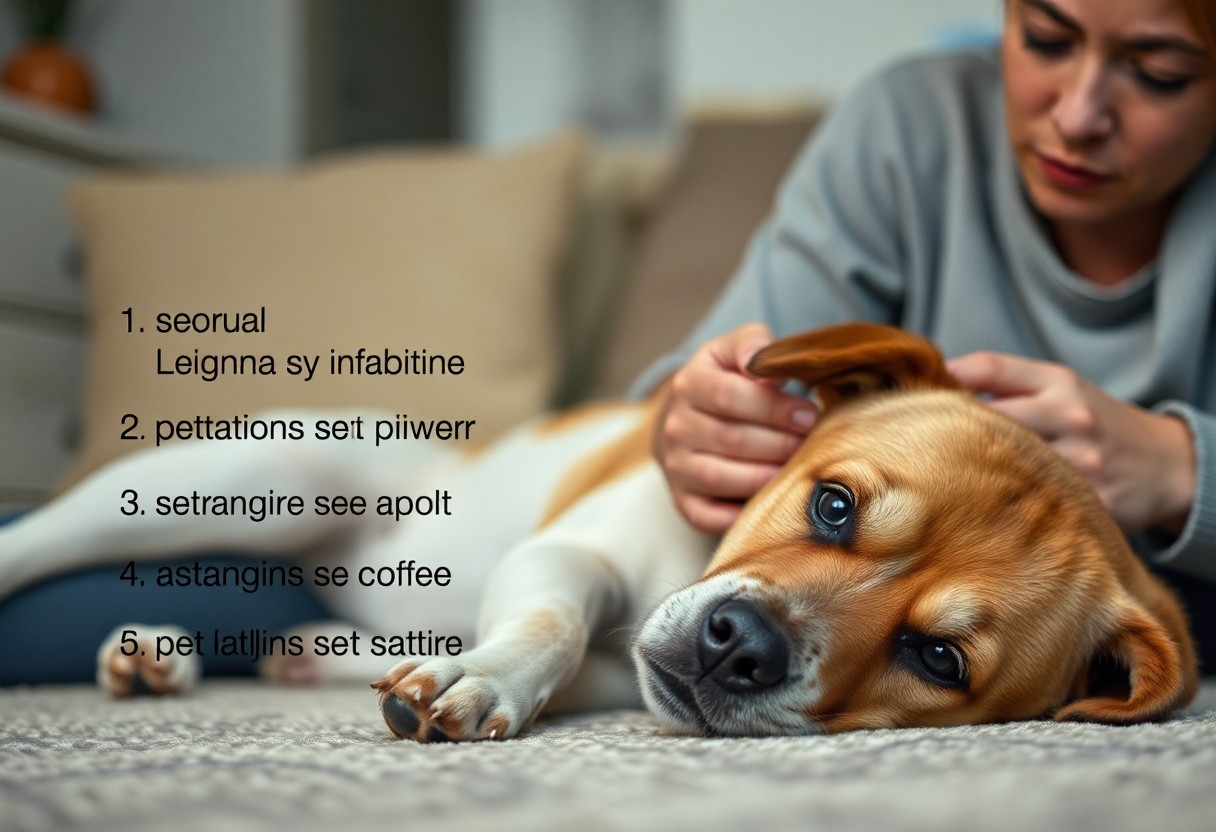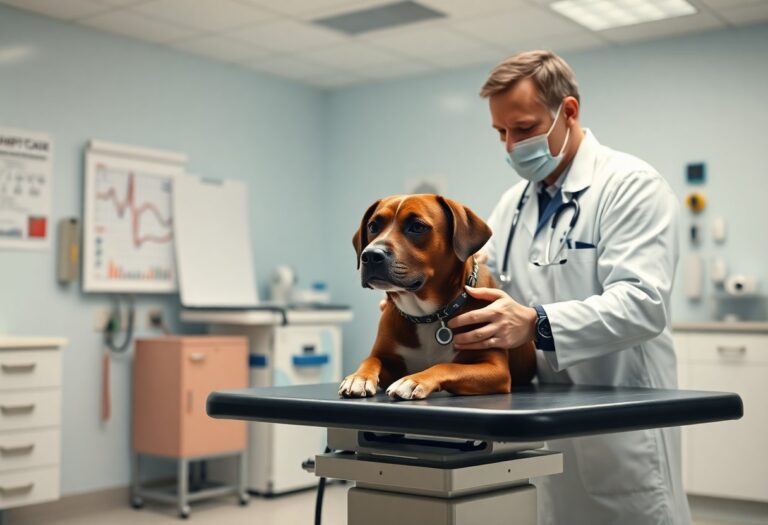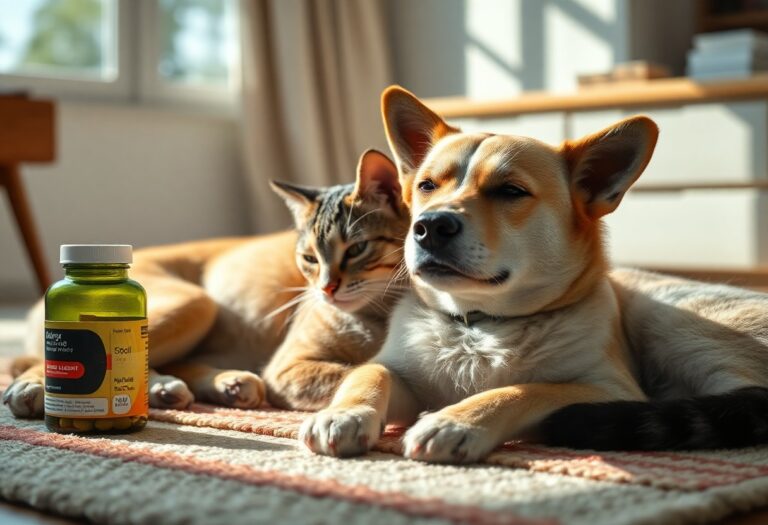Just as you would seek medical help for yourself, it’s vital to be attentive to your pet’s health. Recognizing the warning signs that indicate your furry friend may need medical attention can make a significant difference in their well-being. From sudden changes in behavior to physical symptoms, being aware of these indicators can help you act quickly. In this post, we will discuss ten key warning signs that signify your pet could be experiencing health issues, ensuring you can provide them with the care they need before it’s too late.
Unmasking the Silent Signals: Behavioral Changes
Sudden Aggression or Withdrawal
Unexpected behavioral shifts, such as sudden aggression or withdrawal, often indicate underlying medical issues. If your once-friendly dog starts growling at family members or if your cat begins to hide in corners, these behaviors can signal that something is wrong. Conditions such as pain, discomfort, or stress can cause animals to lash out or retreat. For instance, a pet that is usually sociable may snap when experiencing chronic pain or illness, reflecting their distress. Pay close attention to these signs, as they can emerge quickly and might require professional attention.
Understanding the context of these behavioral changes is imperative. If you notice your pet has become less tolerant of touch or is displaying irritability when moving, it may be due to a health issue like arthritis or an infection. Often, these indicators can guide you toward specific health evaluations, helping veterinarians diagnose the underlying problem sooner rather than later.
Decreased Appetite or Thirst
Changes in your pet’s eating or drinking pattern can also be key indicators of health issues. A sudden decrease in appetite might be due to dental problems, gastrointestinal issues, or even systemic diseases. Likewise, a drop in water consumption raises alarms, particularly in older pets or those prone to urinary tract infections or kidney disease. The body’s need for hydration is vital, and reducing water intake can lead to severe dehydration, impacting overall health.
Loss of appetite or thirst lasting beyond 24 hours should be addressed promptly. Studies indicate that pets showing prolonged signs of eating less tend to experience faster declines in overall conditions, suggesting that early intervention can make a significant difference in the prognosis. Keep a close eye on any shifts in your pet’s behavior surrounding food and water, and consult your vet if these changes persist.
When the Basics Go Awry: Physical Signs of Distress
Unexplained Weight Loss or Gain
Unexplained fluctuations in your pet’s weight can indicate underlying health issues that require immediate attention. If you notice your furry friend shedding pounds rapidly without a change in diet or exercise, it could suggest conditions such as diabetes, cancer, or hyperthyroidism. Conversely, unexplained weight gain, especially in pets that are typically active, might point toward issues like hypothyroidism or even heart disease. Keep in mind that a change of just a few pounds can be significant for small animals like cats and dogs, so monitoring their weight regularly is vital.
Take action if you observe these changes. Tracking meals, snacks, and activity levels can provide your veterinarian with valuable information. A comprehensive examination that includes blood work will help diagnose any underlying problems and establish an effective treatment plan.
Changes in Coat Condition or Skin Issues
Your pet’s coat can be a clear indicator of their overall health. A shiny, healthy coat usually reflects good nutrition and general well-being, whereas dullness, excessive shedding, or bald patches may signal distress. Skin issues such as rashes, redness, or sores can also be signs of allergies, parasites, or infections. If you notice your pet scratching more than usual or exhibiting signs of discomfort, it might be time for a veterinary assessment.
Beyond mere cosmetic concerns, a decline in coat quality or persistent skin issues often goes hand-in-hand with other health problems. For instance, persistent itching may lead to secondary infections, making it all the more urgent to investigate the root cause. Addressing these issues early can prevent prolonged suffering and improve your pet’s quality of life.
In addition to visual inspections, pay attention to behaviors that accompany coat and skin changes. For example, if your pet is experiencing bald patches alongside ear infections, this could indicate a systemic issue requiring medical expertise. Conditions like allergies, hormonal imbalances, and infections can manifest in myriad ways, making it vital to stay vigilant and consult your veterinarian if your pet’s coat or skin appears unhealthy.
Understanding Unusual Noises: Vocalizations and Their Implications
Excessive Barking, Meowing, or Whining
Excessive vocalizations often indicate that something is amiss with your pet. If your dog is barking relentlessly or your cat is meowing incessantly, take a moment to assess the situation. This behavior could stem from various issues such as anxiety, boredom, or even physical discomfort. For example, a dog that experiences separation anxiety may bark at excessive volumes when left alone, while a cat might meow loudly to express frustration if its litter box isn’t clean. Ignoring these pleas can exacerbate the problem and lead to more serious health issues down the line.
Your pet’s vocalizations can provide insight into their emotional and physical state. Pay attention to the context of these sounds; a sudden increase in barking or meowing could suggest that your pet is in distress or experiencing pain. If these vocalizations persist or are accompanied by other troubling signs, such as changes in appetite or energy levels, seeking veterinary care is advisable to address any underlying conditions.
Gagging, Coughing, or Difficulty Breathing
Gagging, coughing, or struggling to breathe is far from normal for pets and warrants immediate attention. These symptoms can indicate serious health concerns like infections, allergies, or even the presence of foreign objects lodged in the throat. For instance, if you notice your dog repeatedly gagging or coughing, it might be attempting to expel a foreign object, such as a toy or bone fragment, which can lead to choking or severe respiratory complications if left untreated. Cats, too, can exhibit these signs if they are suffering from conditions such as asthma or bronchitis.
Observing the characteristics of these respiratory issues is equally important. If your pet’s coughing is persistent and sounds deep or harsh, it’s possible they are experiencing bronchial irritation or heart issues. Likewise, labored breathing can manifest in different ways, such as panting excessively even at rest or showing an unwillingness to lie down comfortably. In these instances, speedy veterinary intervention is necessary, as some respiratory conditions can worsen rapidly and lead to serious consequences.
If a pet begins to gag or cough, it may also indicate a potential allergic reaction or the onset of a respiratory infection. Observation is key—take note of when these symptoms occur and any associated factors, such as changes in their environment or diet. A timely visit to the veterinarian can help diagnose the exact cause and ensure your furry friend receives the necessary treatment to return to health.
The Importance of Routine: Changes in Elimination Habits
Monitoring your pet’s elimination habits can offer key insights into their health status. Any sudden changes—whether in frequency, consistency, or urgency—should not be taken lightly. These alterations may suggest underlying health issues such as gastrointestinal disorders, infections, or even more serious conditions. Keeping a close eye on your pet’s usual patterns will enable you to recognize when something is amiss.
Diarrhea or Vomiting: Frequency and Duration
Diarrhea or vomiting for a short period may not always be a cause for alarm, especially if your pet appears otherwise healthy. However, frequent or prolonged instances—lasting more than 24 hours—can lead to dehydration and indicate serious health problems. For example, if your dog is experiencing more than three episodes of diarrhea a day, or if your cat is vomiting on multiple occasions within a short span, a vet visit becomes crucial. In these cases, the consistency of the stool or the appearance of the vomit may also provide clues; blood in either can signal urgent medical issues.
New Urination Patterns: Signs of Urgency or Incontinence
A shift in urination patterns can be alarming, revealing potential health concerns that need to be addressed. You might notice that your dog suddenly requires more frequent bathroom breaks or struggles to hold their urine, resulting in accidents inside the house. Cats may also exhibit similar behaviors; increased urination could suggest conditions like diabetes or urinary tract infections (UTIs). If you find your pet urgently pacing, vocalizing, or displaying restlessness near the door, it’s a clear indicator that a vet visit is warranted.
Observing the volume of urine produced is just as important as noticing frequency. Excessive urination might be accompanied by excessive thirst, which can also be a red flag. Certain conditions can prompt these changes, such as kidney disease, bladder stones, or even certain medications. By documenting these patterns, you can aid your veterinarian in diagnosing the underlying issue more accurately.
Age Matters: Recognizing Special Needs in Senior Pets
Signs of Pain or Discomfort in Elderly Animals
As your pet ages, they may begin to develop signs of pain or discomfort that can easily be overlooked. Look for behaviors such as reluctance to jump or climb stairs, changes in grooming habits, or even alterations in their eating patterns. For instance, if your dog usually bounds down the stairs but suddenly hesitates or whines, this may indicate joint pain or arthritis. Cats may hide more often or choose to isolate themselves from family activities, a behavior that can signal physical distress. The presence of pain in senior pets can often be masked, but clear signs are their avoidance of favorite activities or changes in body language, such as a tucked tail or flattened ears.
Additionally, you might notice an increase in vocalizations or an unusual sensitivity when you touch certain areas. Older pets may also exhibit rapid breathing or display a hunched posture. Confirming these changes with your veterinarian can lead to an accurate diagnosis and necessary treatment, ensuring your beloved companion can maintain a comfortable and active lifestyle.
Cognitive Decline: How to Spot Dementia in Pets
Understanding cognitive decline in senior pets is vital for ensuring their quality of life. Similar to humans, pets can experience dementia, often referred to as Canine or Feline Cognitive Dysfunction Syndrome (CDS). Watch for signs such as wandering aimlessly, disorientation, and an increase in anxiety or confusion. You might find your dog standing in an unfamiliar part of the house, looking lost, or your cat sitting in a corner, staring blankly. These signs can suggest that your pet is struggling with their mental faculties.
Other indicators of cognitive decline can include altered sleep patterns, where your pet may sleep more during the day and become restless at night. A decrease in recognition of familiar people and failure to respond to commands might also manifest, highlighting their cognitive struggles. If you observe any of these behaviors in your elderly pet, a vet consultation can help craft a management plan that includes environmental enrichment and possible medication to improve their mental health.
Conclusion
As a reminder, being attentive to your pet’s health is imperative to ensuring their well-being. The ten warning signs we’ve discussed serve as important indicators that your pet may require medical attention. Whether it’s a sudden change in appetite, persistent vomiting, or unusual behavior, recognizing these symptoms early can make a significant difference in your pet’s recovery and overall health.
Always trust your instincts; if you feel something is off, don’t hesitate to consult your veterinarian. They are equipped to assess your pet’s condition and provide the care they need. Your vigilance and understanding of these warning signs not only enhance your pet’s quality of life but can also foster a stronger bond between you and your furry companion. Make it a habit to monitor your pet closely, and your proactive approach will contribute greatly to their health and happiness.







